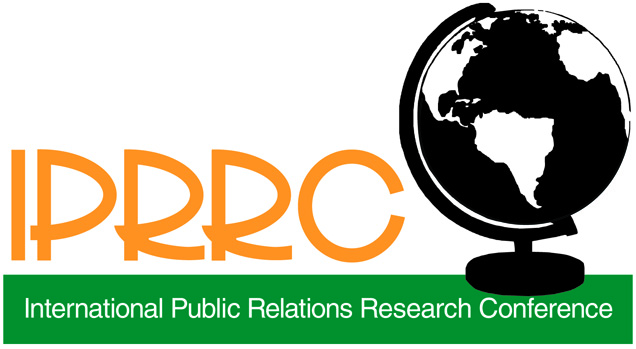Fueled by advances in digital tools and artificial intelligence (AI), public relations is transforming into a data-driven practice. Communicators must curate, analyze, and draw insight from disparate streams of data to inform decisions relevant to organizations and society. This rapid evolution demands an equally quick adaptation from communicators, who have indicated they want more training … Continue reading How to Foster Discovery and Innovation Through Data Among PR Teams
- Home
- How to Foster Discovery and Innovation Through Data Among PR Teams
All posts by Julie O'Neil

This year marks the 25-year-anniversary of the IPR Measurement Commission. Founded in 1997, the mission of the Commission is to develop and promote standards and best practices for research, measurement, and analytics that contribute to ethical, strategic, and effective public relations. In recognition of this important milestone, I’d like to highlight 10 reasons to celebrate … Continue reading Happy 25th Birthday to the IPR Measurement Commission →

This blog post is provided by the IPR Measurement Commission in celebration of Measurement Month in November. Much of the focus in internal communication is on functional, pre-and post-test measurement and evaluation of campaign initiatives. While assessing outputs, outgrowths, and outcomes of communication campaigns and initiatives are both important and fundamental to practice, practitioners might consider … Continue reading Measuring and Evaluating: How Internal Communication Creates Value →

This summary is provided by the IPR Organizational Communication Research Center Summary Although internal communicators have various tools to communicate with employees, internal social media offer a “synchronous” opportunity (allows two or more people to share communication in real-time) for organizations to share detailed, transparent, up-to-date information. Recently, more organizations are using internal social media. Despite … Continue reading Organizations’ Administration of Internal Social Media and Relationship Cultivation – From the Employee Perspective →

This summary is provided by the IPR Digital Media Research Center Summary This study examined whether and how internal social media influences employee engagement. Specifically, this study proposed and tested a conceptual model that links employees’ use of internal social media, their perceived organizational transparency, and organizational identification to employee engagement. The results showed that … Continue reading Examining the Effects of Internal Social Media Usage on Employee Engagement →

Most of us in public relations have heard the claim that publicity, or earned media, has greater credibility than a paid advertisement. Consider what the author (Wynne) of a 2014 Forbes article titled “The Real Difference between PR and Advertising” wrote: “Advertising is paid media, public relations is earned media. This means you convince reporters or … Continue reading Is Earned Media More Credible than Advertising? →

Author(s), Title and Publication Ewing, M., Men, L. R., & O’Neil, J. (2019). Using social media to engage employees: Insights from internal communication managers. International Journal of Strategic Communication, 13(2), 110-132. Summary Internal social media has emerged as the new frontier for internal communicators to achieve long-term organizational goals, including engaging employees. Previous research suggests that … Continue reading Using social media to engage employees: Insights from internal communication managers →

The explosion of social and digital media in recent years has fueled job opportunities and the number of educational programs in public relations. The Bureau of Labor Statistics projected that the public relations field will grow 6 percent from 2014 to 2024 and that 14,900 new jobs will need to be filled. Student enrollment in public relations programs … Continue reading How IPR Can Help Educate Future Public Relations Practitioners →

The purpose of this research is twofold: (1) to test the reliability of the proposed media standards based upon a content analysis of a randomly selected sample of media coverage; and (2) to provide a “ready-made” set of tools in the form of a tested and effective media coding guidebook and coding instructions to enable … Continue reading An Examination of the Validity, Reliability and Best Practices Related to the Standards for Traditional Media →

Summary Although public relations practitioners and researchers frequently tout the ability of Facebook to foster relationships between organizations and publics, sparse research has empirically investigated the specifics of that process. Corporations and nonprofit organizations have different missions and publics with whom they communicate, because they likely use different relationship cultivation strategies via Facebook. This study … Continue reading An Examination of Fortune 500 Companies’ and Philanthropy 200 Nonprofit Organizations’ Relationship Cultivation Strategies on Facebook →

PDF: An Examination of the Validity, Reliability and Best Practices, Related to the Proposed Standards for Traditional Media David Geddes, Ph.D., Julie O’Neil, Ph.D, and Marianne Eisenmann, MBA, received the Jackson-Sharpe Award for this 2014 International Public Relations Research Conference submission. Abstract:At the 16th Annual IPRRC in March 2013 the researchers presented the first phase … Continue reading An Examination of the Validity, Reliability and Best Practices Related to the Proposed Standards for Traditional Media (Jackson-Sharpe Award Winner) →
Topic: Measurement of Employee Communication Outputs and Outcomes Author(s), Title and Publication O’Neil, J. (2008). Measuring the impact of employee communication on employee comprehension and action: A case study of a major international firm. Public Relations Journal, 20(2). Summary This case study describes how a global firm planned, implemented, and evaluated a new communication strategy … Continue reading Measuring the impact of employee communication on employee comprehension and action: A case study of a major international firm →
